I love fava beans!!! It is one of the vegetables that brings me the feeling of beautiful mid-spring, since its season is from April to the beginning of June in Japan. Here in California, the season comes a little late—early summer. Still for me, it carries the message that the warm and colorful season is gradually arriving, which brings me cheerful feelings.
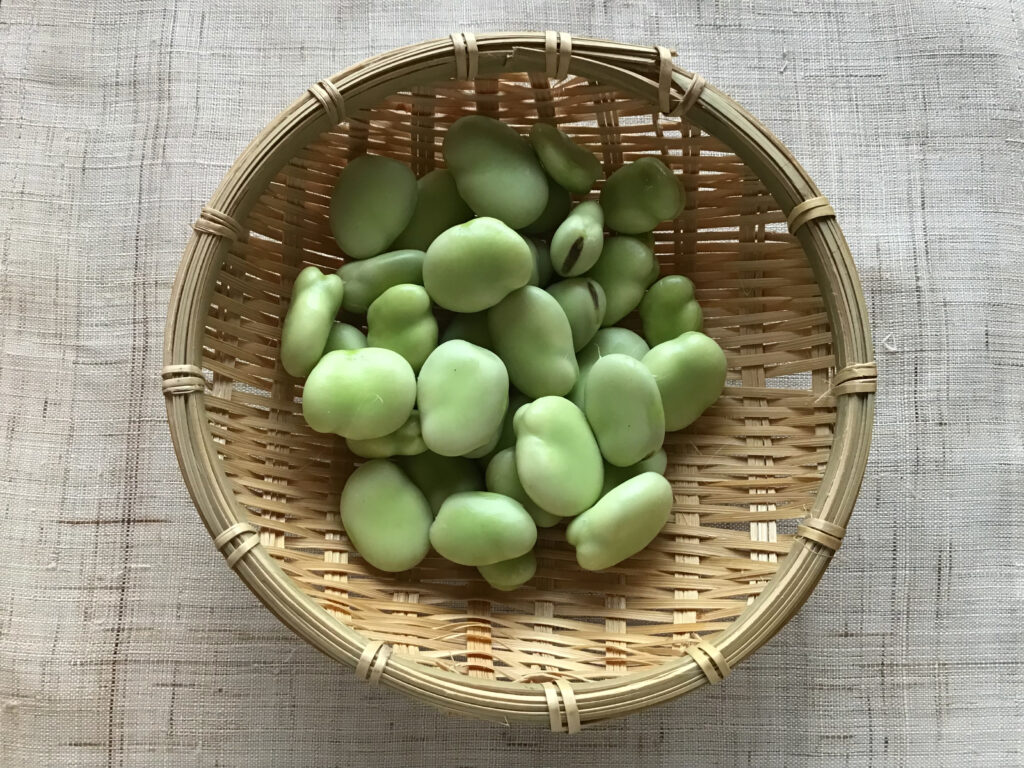
Fava beans are usually served as a side dish in Japan. But it would easily catch people’s positive attention due to its seasonal characteristics. Preparing fava beans is very easy. Taking the beans out from the outer pod, giving a short cut to the top of the inner shell, bringing the water to a boil, adding a little amount of salt, and boiling the beans for a couple of minutes. That’s it! Although the inner shell can be eaten, it is a much more delicate and finer taste when you peel off the shell. That’s why you make a cut at the top of the beans. In this way, you can press the center with your fingers, and the bean will come out very easily.
Today’s Menu
- Black beans rice
- Miso soup with wakame and kabocha squash (Basic miso soup recipe here)
- Boiled fava beans
- Water sautéed cabbage
- Kale salad with black sesame tahini with steamed kabocha squash
- Carrot green salad with white sesame tahini (recipe here)
For this dinner, I made a few other small dishes with different vegetables besides the fava beans, together with black beans rice and miso soup. I used different seasonings for each dish—sautéed cabbage with salt, kale salad with soy sauce and mirin, carrot green salad with ume plum vinegar, and there is also miso flavor from the miso soup. In this way, there are a variety of flavors to be experienced in one meal. Also, I decided to add some kabocha squash next to the kale and black sesame tahini salad. This will not only add some sweet and comforting flavor of kabocha squash in this salad, but also bring a bright yellow color into the meal. Kabocha squash is not necessarily a seasonal vegetable here in California, but still I see it at the farmers market at this time of the year, which might be the remaining harvest from last fall. Otherwise, in winter time, I usually get a big amount of kabocha squash, part of which I cut into cubes, steam, and store in the freezer. Kabocha squash has not only a beautiful color and sweet flavor, but also a warming and softening/loosening effect for the body that brings a gentle sense of relaxation and support to our digestive system.
Black beans rice
Cooking rice with some beans is a wonderful variation you can make. In Japan, people would cook with Adzuki beans, which is called “Osekihan,” meaning red cooked rice. This is traditionally served in the occasions for celebration. I like cooking rice with black beans as it has a richer and softer flavor than Adzuki beans. Adzuki beans as well as black beans are good for the kidney and reproductive organs due to their dark colors. It is very good for women to eat good amounts of dark colored food such as these beans, seaweeds, black sesame, and walnuts!
I soak and rinse the rice and beans separately prior to cooking them together. I soak the rice in the pot, as I use the soaking water when cooking rice. But I would discard the water I soak the beans in, rinse once, and add fresh water. Although it feels a pity to let go of the beautifully dark colored water, draining the soaking water of the beans can reduce the gas production in our bowels. Then I add the beans to the pot let them join the rice, adding some more water in the pot, then cooking them together! (Click here to learn how to cook delicious brown rice.)
Water sautéed cabbage
This dish is so simple, yet absolutely delicious! It is one of my favorite ways to cook the cabbage. You slice the cabbage beautifully thin. On the pot or pan (depending on which size of pan and pot you have as well as how much cabbage you will use), you put the cabbage and pour in roughly a 1/4 cup of water. You turn on the heat to medium high and put the lid on to let it get steamed until the volume of the cabbage goes down. Open the lid and start to use the bamboo or wooden spatula to stir. Add some salt and do like you would when sautéing, but without any oil. Once the cabbage’s texture becomes soft enough and seasoned equally, turn off the heat. Crush some white pepper, then pour in some toasted sesame oil and mix together. Through sautéing only with water and adding the oil at the end, the aroma as well as the fresh quality of the oil can be enjoyed.
For this dinner, I sprinkled Shichimi (a Japanese traditional mix of seven different spices) after serving, instead of using white pepper. Not everyone has Shichimi, and I also often use white pepper instead. So, I wrote the white pepper version above in the recipe. Also, I sometimes like to use the EV olive oil instead of toasted sesame oil, depending what kind of food I am serving it with. You can also make this in a non-Japanese way, using other spices and herbs. The thinly sliced soft cabbage with its beautiful juicy flavor is so pleasant to eat that we can eat half of a big cabbage so easily in a single meal. And cabbage has a good amount of fiber, and packed with high nutrition, it is a great support for the health of our gut.
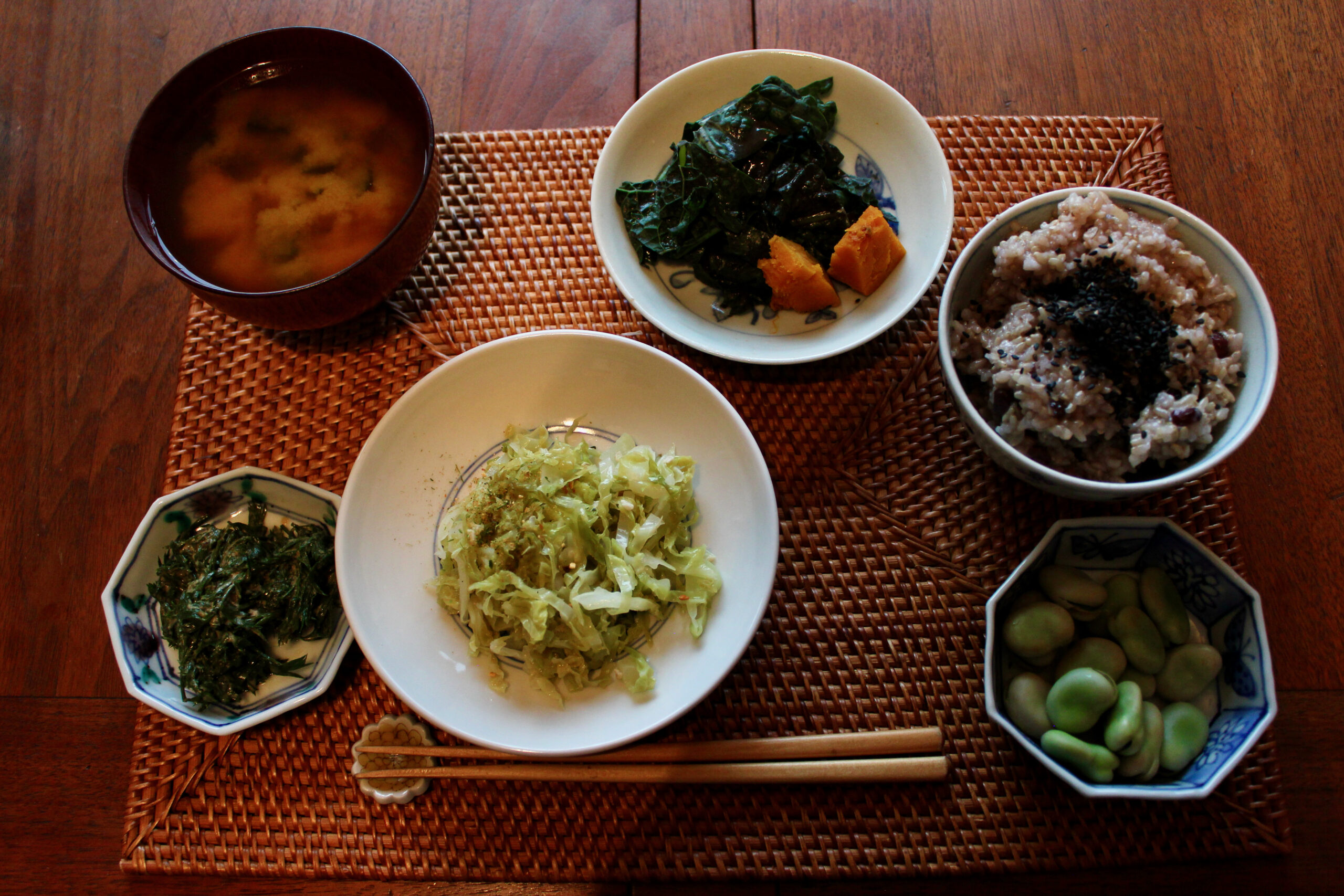
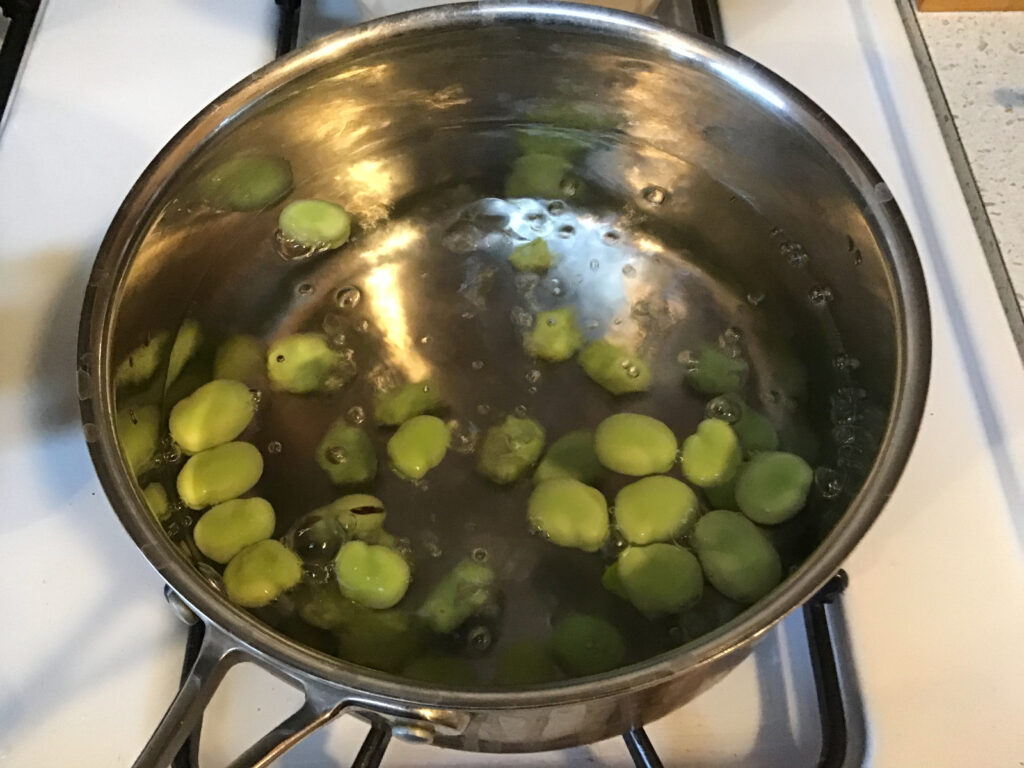
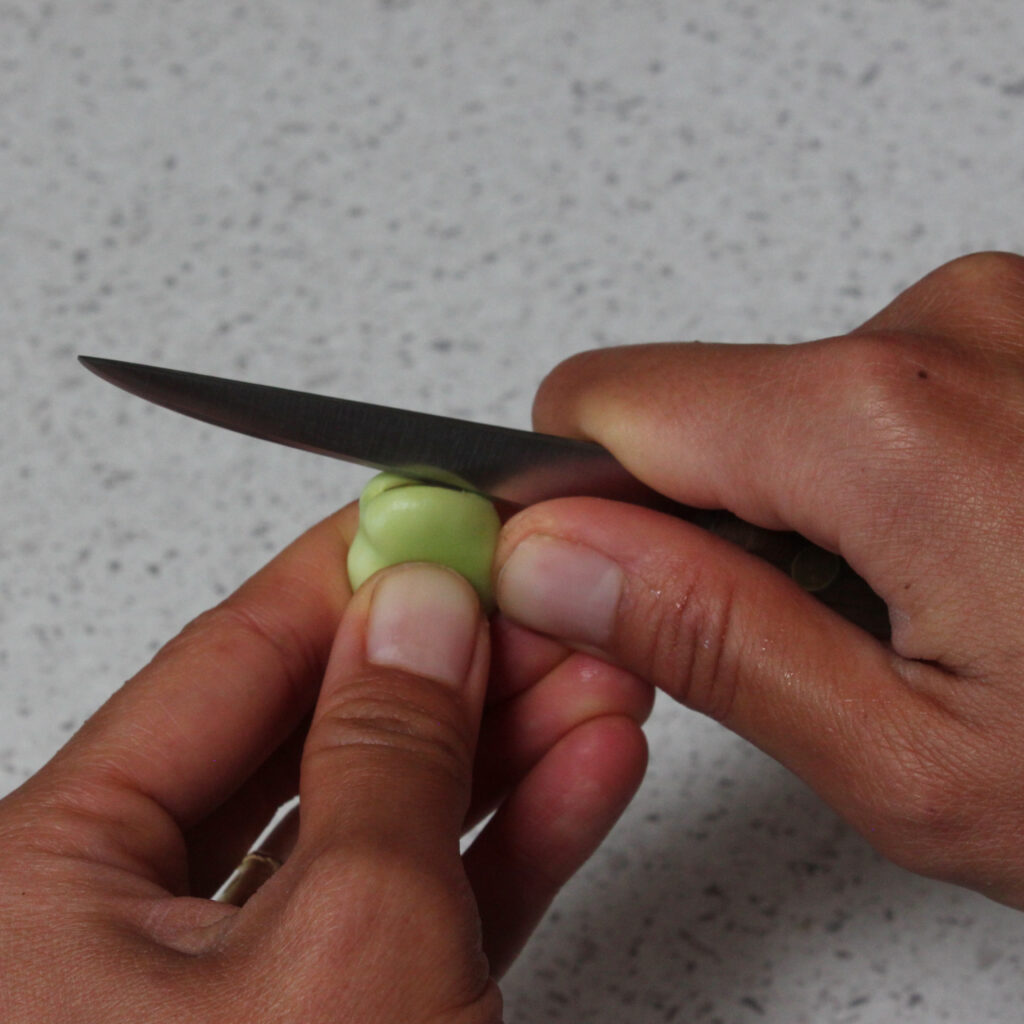
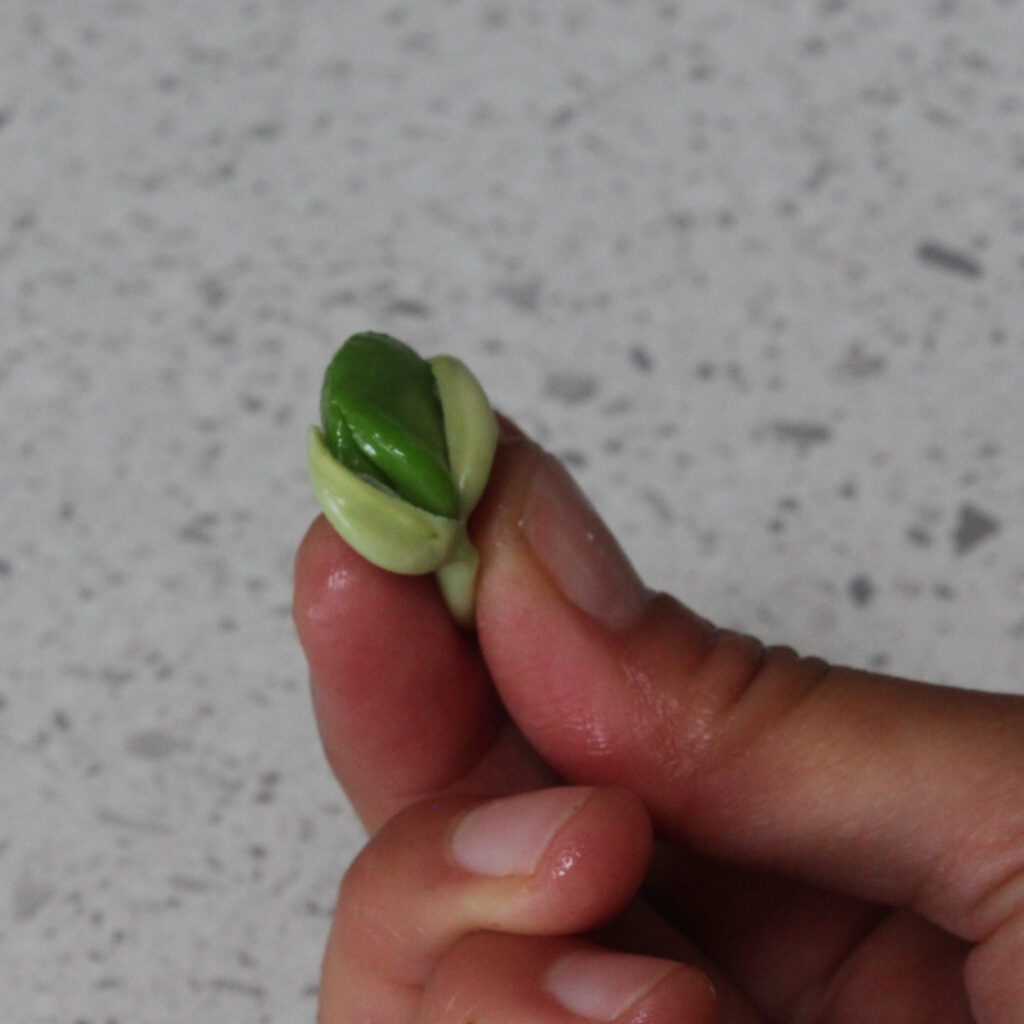
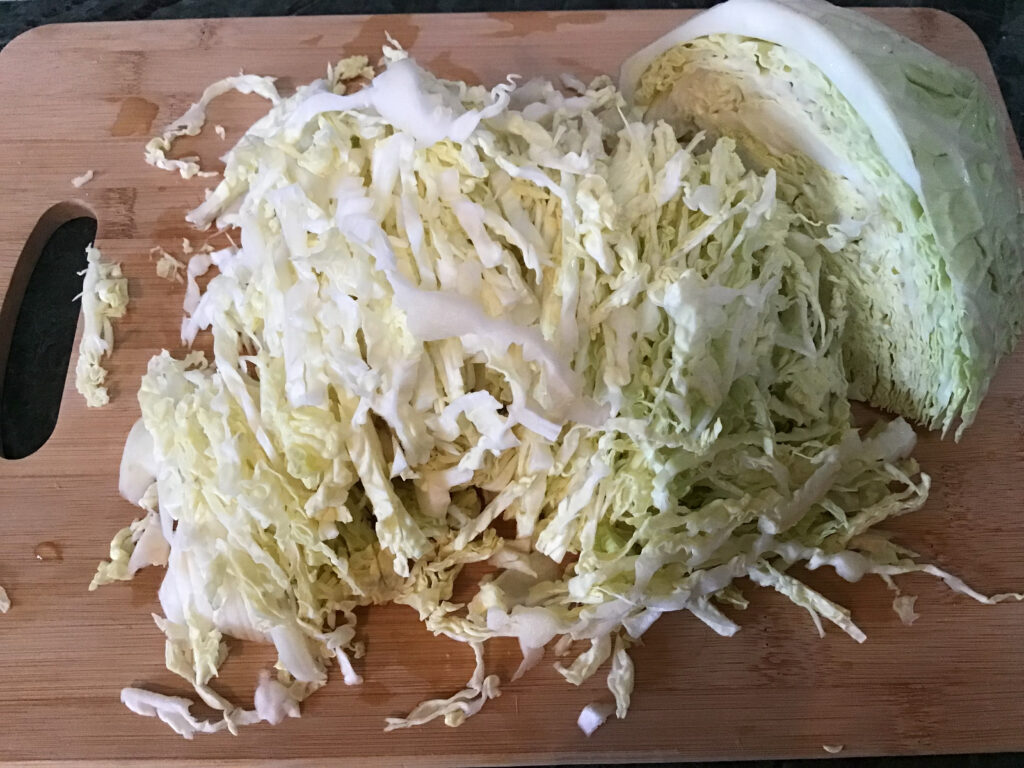
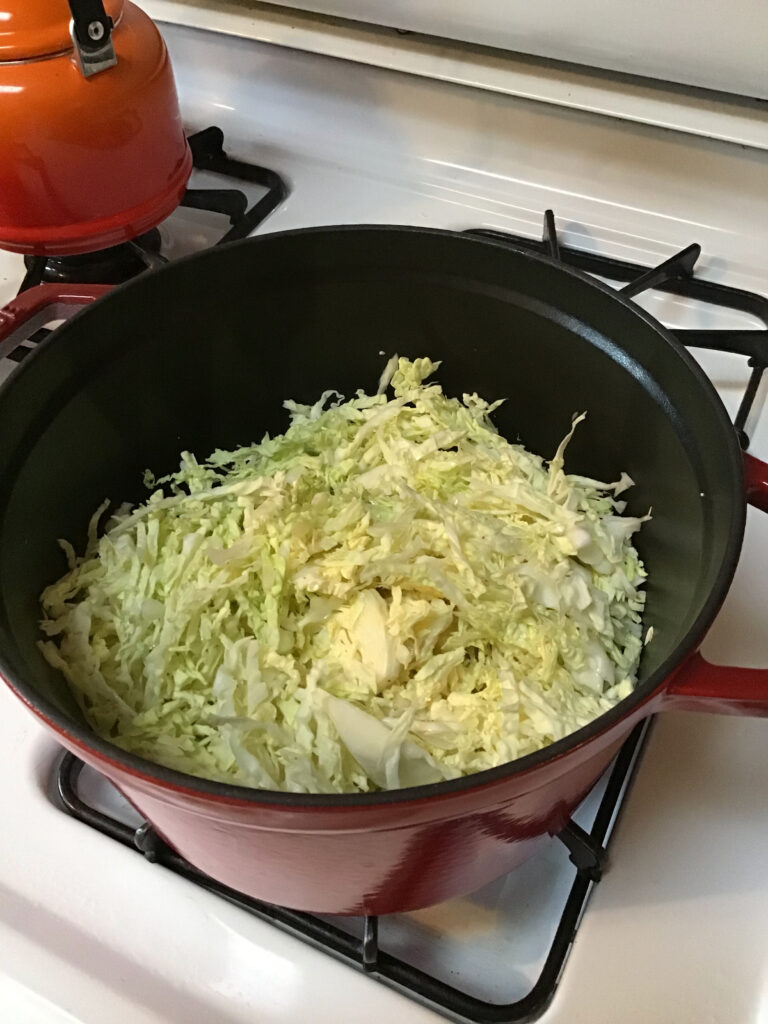
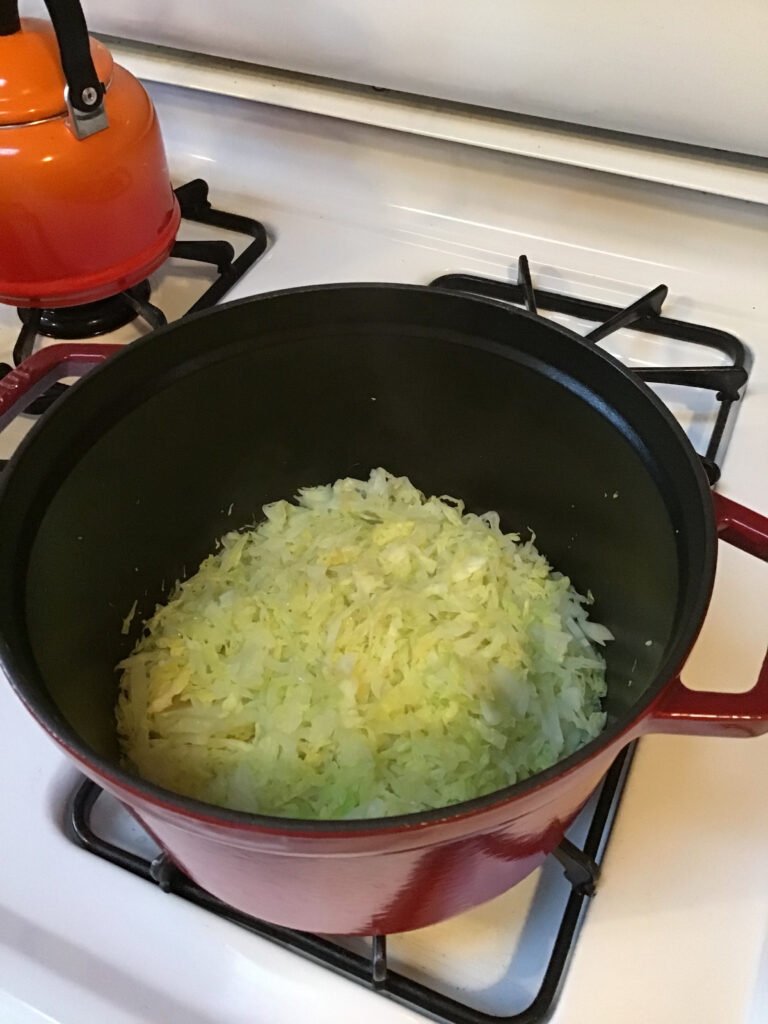
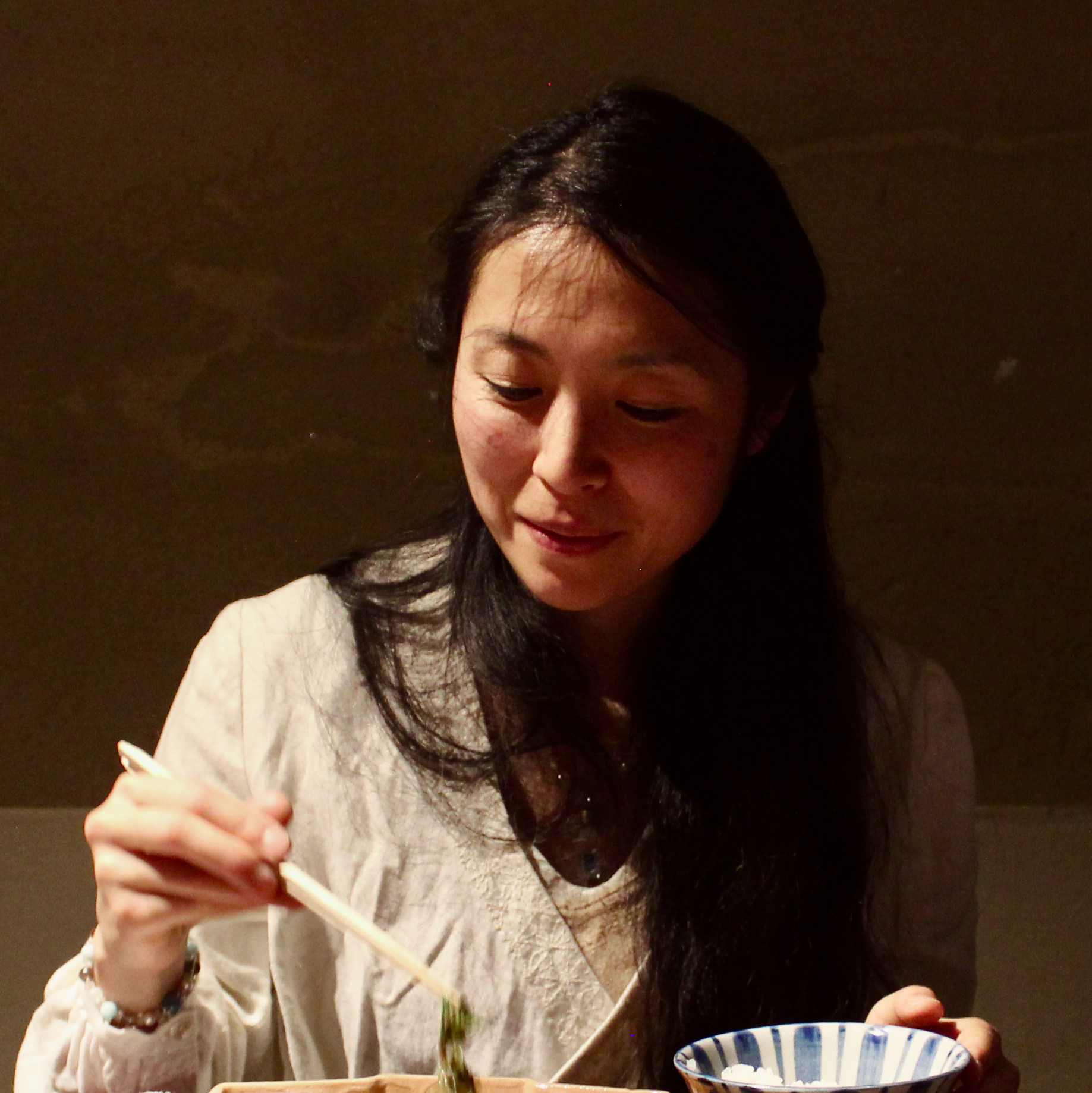
1 thought on “Dinner with boiled fava beans and beautiful vegetable dishes”
Comments are closed.